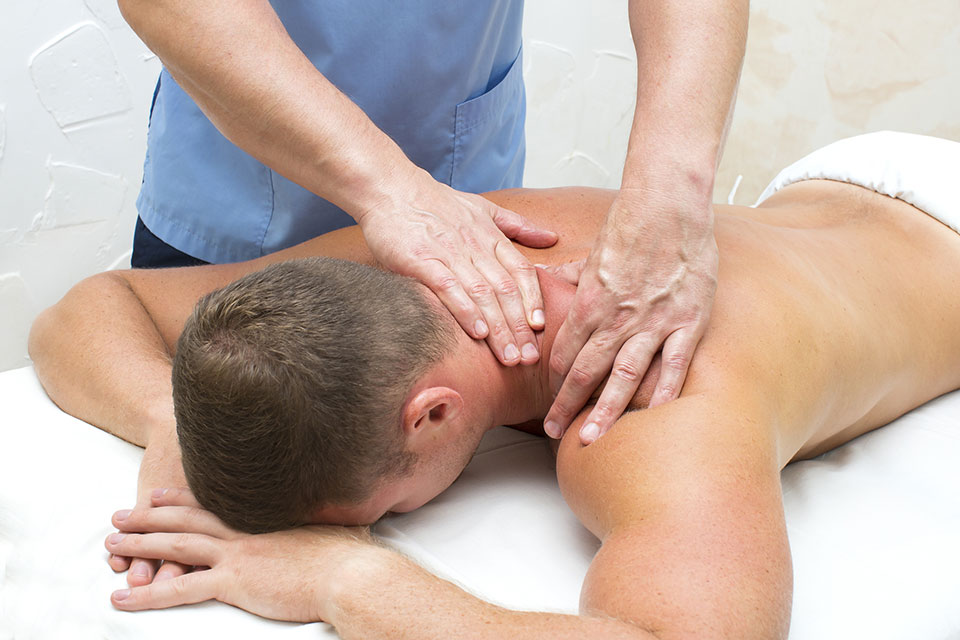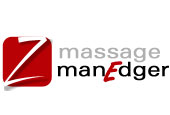Edson Massage & Manual Osteopathic Therapy
Edson Massage & Manual Osteopathic Therapy

Welcome to Edson Massage & Manual Osteopathic Therapy, a Manual therapy clinic located in Edson, Alberta.
ALL ABOUT ME (Therapist)
Hello, my name is Grace Levesque, Registered Massage Therapist and Manual Osteopathic Therapist. I also have a Bachelor of Science in Psychology (Philippines). I have three kids and been doing massage for over Ten years and as a therapist i am really FASCIAnated about how the body work.
Courses/Trainings:
- Advanced Technique for Neck and Upper Back
- Dynamic Cupping (fire,suction,silicon)
- Meridian and Acupressure
- Orthopedic Massage
- Visceral Manipulation Abdomen1 (Barral Institute international)
- Craniosacral Therapy 1 (Upledger Institute International)
- Fascia and the Immune System (Tom Myers, Anatomy Trains and Todd Garcia) Livestream DISSECTION
- Cadaver Lab (Anatomy)
- Muscle Release Hot Stone
- Manual Lymphatic Drainage (Dr.Vodder International)
Manual Osteopathic Therapy Modalities
- Osteoarticulation
- Myofascial Remodelling
- Craniosacral Therapy
- Manual Lymphatic Drainage
- Visceral Manipulation
Please book your Massage or Manual Osteopathic therapy appointment today.
What we do

The clinic provides advanced therapeutic, relaxation massage, cupping and Manual Osteopathic Therapy in a safe, comfortable, and relaxing environment.
FAQ.....
What is Manual Osteopathic Therapy?...
Introduction
Osteopathy was founded by Dr. Andrew Still, in June 22, 1874 after witnessing the death of his children from meningitis and being unable to assist. Rather than address symptoms which is what medicine was doing at the time, he proposed using the musculoskeletal system to diagnose and facilitate the body's innate way of healing.
Osteopathy and osteopathic practice is protected title used by medical doctors only. Other health care professionals have been allowed to undertake osteopathic-based training under the title Manual Osteopathic Therapy/Osteopathic Manual Therapy with the identical philosophy and principles of Osteopathy.
Answer: Manual Osteopathic Therapy is a gentle non-invasive hands-on therapy that focuses on bringing the body’s structure and function back to a state of whole body optimal health. Through extensive intake notes and various hands-on assessments dysfunctional patterns are recognized that reside in the body causing structural and functional disruptions that may present as pain or dis-ease in the body. These disruptions are treated through various techniques. These may include Muscle Energy Techniques to balance musculoskeletal restrictions (skeletal and muscle), joint and fascial mobilizations aiding in releasing “stuck joints” by engaging with soft tissues and fascial manipulation that help increase range of motion along with Myofascial remodeling that allows the release of fascial restriction/adhesion to increase circulation. Lymphatic techniques aid to enhancing fluid flow releasing congested toxic areas to improve immunity and Cranial Sacral techniques to improve the Primary Respiratory Mechanism which includes mobility of cranial bones, skeletal structures, meninges (connective tissues), central nervous system and circulation of all fluids. Visceral techniques aid in increasing mobility and motility (function) of the organs of the body.
The goal of Manual Osteopathic Therapy is to restore health and balance by assessing and treating the imbalances that reside within the structures and functions of the body having an appreciation that the body works as a single unit, the body has an innate ability to heal itself, the musculoskeletal structures impacts function and the body has self-governing means.
Four (4) Founding Principles:
1. The body works as a single entity.
2. The musculoskeletal structure impacts function.
3. The body has self-governing means.
4. The body has the capability to protect, repair and regenerate itself to preserve its functions.
What is the difference between an Osteopath and Manual Osteopathic Therapist or Osteopathic Manual Therapist?
Answer: An Osteopath in Canada refers to a Medical Doctor that has specialized training in Osteopath Therapy. There are currently no schools in Canada that provide this specialized training, and there are currently between 20-30 Osteopaths nation-wide. In Canada the terms “Osteopath”, and “Osteopathic Physician” are both protected titles under the various provincial legislative acts governing their respective College of Physicians and Surgeons.
Manual Osteopathic Therapists or Osteopathic Manual Therapists (the terms are interchangeable) are non-physicians who have been trained in a specialized school of Manual Osteopathic Therapy.
According to the World Health Organization there are 2 different types of Manual Osteopathic Therapists.
The first training program – which is referred to as Type 1 – is “aimed at those with little or no prior health-care training, but who have completed high school education or equivalent. These programs typically are four-year, full-time programs. A typical type 1 program would take 4200 hours, including at least 1000 hours of supervised clinical practice and training.
The second training program – which is referred to as Type 2 – is “aimed at those with prior training as health-care professionals. Type 2 programs have the same aims and content as the Type 1 programs, but the course content and length may be modified depending on the prior experience and training of individual applicants.” This program is typically around 1000 hours in length and is adapted depending on the individuals prior training and knowledge.
What is the difference between a 4-5-year Manual Osteopathic program and a 1–2-year
Manual Osteopathic Therapy program?
Answer: The primary difference is in the type of benchmark that the programs are trying to attain. Most of the 4 to 5 years schools have been started by Manual Osteopathic Therapists that have been trained and emigrated from Europe, Australia, or Asian countries where the training is 4 to 5 years. In Canada, Massage Therapists, Nurses, Physiotherapists, etc. go through rigorous training in Anatomy, and Physiology, whereas most other places in the world, and even in the United States, the requirements for training are much lower. It is with this preconceived idea that many of those schools approach the requirement to have a 4 to 5-year program, as such based on a Type 1 WHO model. Those schools who have a condensed model are the ones who require that the individual taking Manual Osteopathic Therapy have prior experience in the health-care industry(ies) and take the approach of the Type 2 WHO model.
What to expect when getting MOT treatment
- You will need to fill out an intake form (health history form) ahead of time so you don't miss anything,(you will get it through email)
- Patient/clients needs to wear legging/sweat pants/shorts, loose t-shirts/tank top/sports bra (women), sweat pants/shorts/t-shirts (men) to move freely and for the Therapist to access the structure easily, we'll be doing FUNCTIONAL AND STRUCTURAL ASSESSMENT ( Resisted, Passive and active Tests) *Please don't wear denim pants* if u do, please bring boxers
- Bring water/bottled water
- For initial appointment of 90 minutes, more time will spend on assessments (when booking online, pls. fill the "note" section with "MOT"), so therapist can send intake form/health history right away.
- Treatment Plan/contraindications will be discuss during the initial appointment, treatment will be 'person-base' approach.
MODALITIES/TECHNIQUES: (MOT)
Osteoarticulation, correcting imbalances
Myofascial (muscle tissue) Remodelling, addressing fascial restrictions due to chronic injury/trauma, postural dysfunctions, scarring
Involuntary Mechanism,( Craniosacral Therapy, Manual Lymphatic Drainage), promoting good cerebrospinal fluid and lymphatic movement
Visceral Manipulation , this techniques is dealing with the organs, addressing organs Motility, Mobility and Motricity and how it affects the musculoskeletal system.
"MANUAL OSTEOPATHIC THERAPIST HELPS FACILITATE BODY'S SELF-HEALING".
CONTRAINDICATIONS:
PLEASE LET THE THERAPIST KNOW IF YOU ARE EXPERIENCING ONE OF THESE SYMPTOMS
VISCERAL MANIPULATION
- Undiagnosed medical condition
- If patient exhibits extreme autonomic symptoms during treatment (extremely anxious)
- Breaks out into clammy sweats
- Goes pale
- Feel nauseous
MANUAL LYMPHATIC DRAINAGE
- Acute viral infections
- Acute bacterial infection
- Blood clot
- Risk of embolism (blocked artery due to blood clot or air bubble)
- Acute angina
- Cardiac insufficiency
- Internal bleeding
- Absence of urination
- Undiagnosed lump
- Edema
- Removed lymph nodes
Absolute contraindications;
Acute surgeries, (organ removal, chemotherapy, carotid stenosis )
CRANIOSACRAL THERAPY
- Acute intracranial hemorrhage
- Intracranial aneurysm
- Recent skull fracture
- Herniation of the medulla oblongata (symptoms; highblood pressure,irregular or slow pulse rate, severe headache, weakness, cardiac arrest (no pulse), loss of consciousness, loss of brainstem reflexes (blinking, gagging, and pupils reacting to light). caused by Head injuries..
***PLEASE REFRAIN FROM BOOKING IF YOU EXPERIENCE THESE SYMPTOMS***
"Our practice is dedicated to improving the general health and wellbeing of all our clients".

Massage Therapy can help:
- Relax your muscles
- Improve blood circulation
- Improve mobility/flexibility by increasing the range of motion
- Alleviate pain

